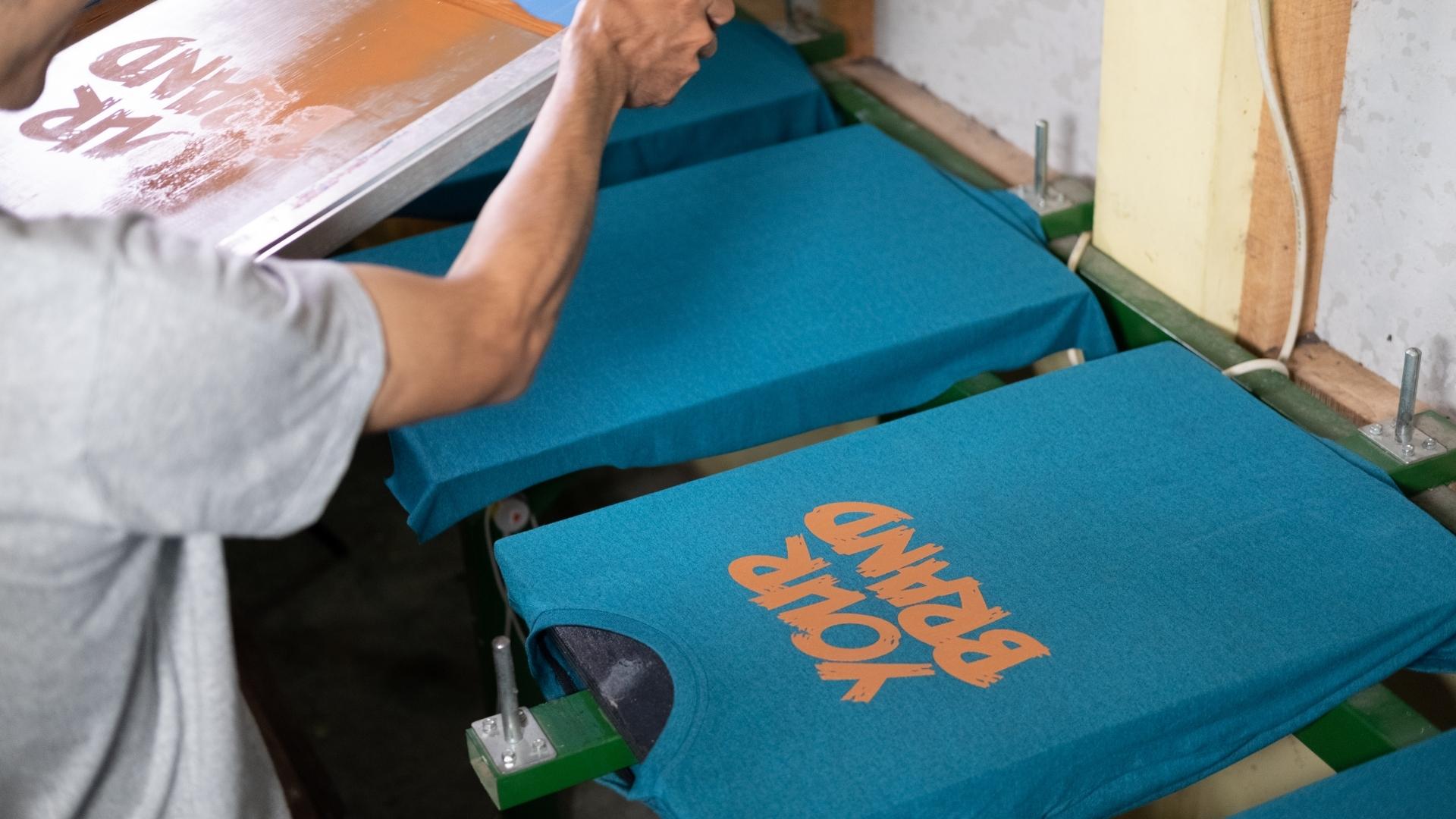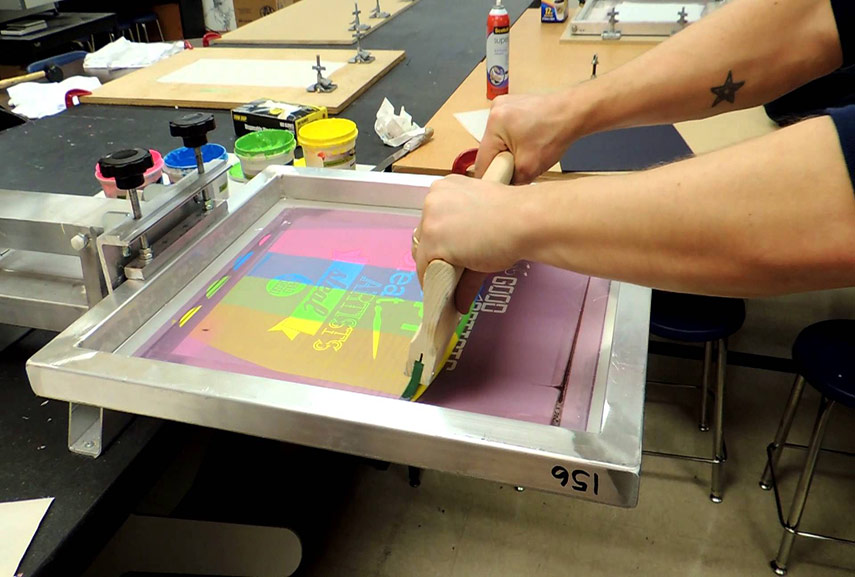The Crucial Guide to Understanding Screen Printing and Its Versatile Makes use of
Screen printing has a rich history that dates back to ancient times, developing into an advanced strategy utilized across various markets today. This guide discovers the intricacies of the screen printing process, describing its applications in home, marketing, and fashion décor - 10:9 Design Embroidery. Understanding these basics can open innovative capacity for both industrial and creative tasks. The following areas will certainly reveal essential pointers and techniques to boost one's screen printing ventures
The History of Screen Printing
Although screen printing has roots that trace back centuries, its advancement shows the technical and creative advancements of numerous cultures. Coming from in ancient China, the strategy was initially utilized for enhancing fabrics and later infect Japan, where it ended up being essential to Ukiyo-e woodblock printing. The technique shifted to Europe in the 18th century, where it gained appeal among craftsmens and industrial printers. The innovation of picture emulsion in the 20th century changed screen printing, permitting more complex designs and higher effectiveness. Musicians like Andy Warhol additionally drove its appeal, making use of the medium to create famous jobs that blended commercialism and great art. By the late 20th century, screen printing had established itself as a functional strategy, used in vogue, marketing, and great art. Today, it remains to progress, incorporating digital innovation and broadening its applications throughout various sectors.
The Screen Printing Process Explained
Screen printing transforms artistic visions right into concrete styles via a series of specific steps. An image is created and after that moved onto a screen, typically made of fine mesh material extended over a framework. A light-sensitive solution is used to the screen, which is subjected to light, hardening in areas not covered by the image. After washing out the unhardened solution, a stencil is developed.
Next off, the screen is placed over the substratum, whether it be textile, paper, or an additional product. Ink is after that pushed with the open locations of the pattern making use of a squeegee, depositing the design onto the substratum below. This process can be duplicated for multiple shades, calling for different screens for each and every shade. The printed thing is healed utilizing warm to ensure the ink sticks effectively, resulting in a durable, dynamic style all set for use.
Kinds of Screen Printing Techniques

In addition, specialty methods, such as discharge screen printing, get rid of dye from the fabric to produce softer prints, while aluminum foil screen printing uses metallic foil to accomplish a glossy surface (10:9 Design Screen Printing). Each technique offers unique attributes, dealing with numerous imaginative demands and production ranges, ultimately increasing the possibilities within the screen printing domain name
Applications of Screen Printing in Various Industries

Furthermore, the signage and marketing fields make use of screen printing for creating eye-catching screens and banners. This approach enables vibrant colors and detailed styles that catch focus. In electronic devices, screen printing is utilized for using conductive inks to motherboard, crucial for component links. In addition, the home decoration market embraces screen printing to create unique layouts on textiles and wall surface art. Generally, screen printing serves as a crucial tool across diverse fields, enhancing items with customized and visually appealing graphics.
Tips for Successful Screen Printing Projects
While taking on a screen printing project, careful focus to information can substantially improve the final end result. Initially, picking high-quality products is important; this consists of the screen, inks, and substrates. Utilizing proper mesh counts can influence ink deposition and detail resolution. Preparation is just as important; thorough cleaning of screens and proper exposure times guarantee crisp prints.
Next, accurate registration is vital for multi-color prints. Using alignment devices can assist attain precise layering. Additionally, screening prints on scrap products prior to manufacturing aids identify prospective concerns without losing resources.

Often Asked Questions
What Products Are Finest for Screen Printing on Material?
Cotton and polyester blends are excellent for screen printing on material due to their resilience and ink absorption. In addition, specialized fabrics like silk or canvas can produce special textures and finishes, boosting the overall layout high quality.
Just how Do I Tidy and Maintain Screen Printing Equipment?
To keep and cleanse screen printing tools, one should on a regular basis clean screens with suitable solvents, evaluate mops for wear, lubricate moving components, and shop all products in a completely dry, dust-free atmosphere to extend their life-span.
What Are the Ecological Effects of Screen Printing?
Screen printing can have substantial ecological effects, including chemical waste from solvents and inks, water use during cleansing procedures, and power consumption. Environment-friendly products and sustainable methods are important for minimizing these negative results.
Can Screen Printing Be Done in your home Effectively?
Screen printing can be efficiently done at home with the appropriate materials and strategies. Enthusiasts can create quality prints, though success relies on their skill level, equipment, and understanding of the procedure included.
What Are the Prices Related To Beginning a Screen Printing Organization?

Beginning a screen printing service entails prices for devices, products, and work space. Initial costs generally vary from a couple of hundred to a number of thousand dollars, depending upon the range, top quality of equipment, and preferred production ability.
Screen printing has an abundant history that dates back to ancient times, advancing into an advanced strategy utilized across numerous industries today. One more technique, rotary screen printing, uses round screens, facilitating continuous printing on textile rolls, therefore improving effectiveness for massive manufacturings. Additionally, specialty methods, such as discharge screen printing, remove color from the material to produce softer prints, while aluminum foil screen printing applies metal foil to accomplish a glossy surface. In the fashion market, screen printing is commonly utilized to produce dynamic styles on clothing, enabling brands to showcase their unique styles. Cotton and polyester blends are optimal for screen printing on textile due to their resilience and ink absorption.